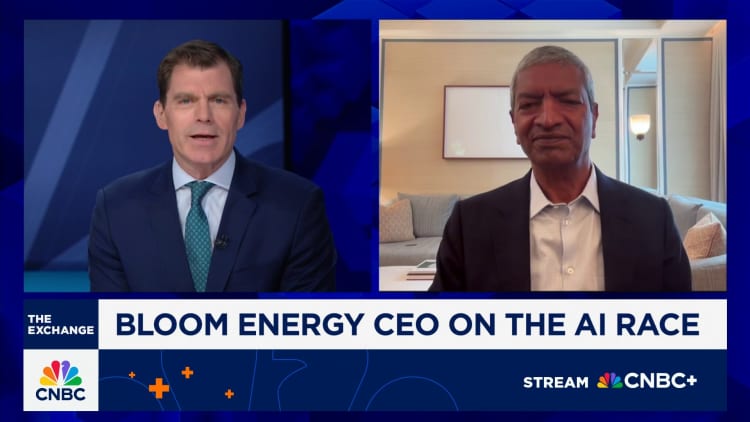- Brookfield Asset Management will spend as much as $5 billion to deploy Bloom Energy’s fuel cells.
- Bloom’s fuel cells provide onsite power that can be deployed quickly because they do not rely on a connection to the electric grid.
Shares of Bloom Energy soared early Monday after striking a deal with Brookfield Asset Management to install fuel cells in artificial intelligence data centers.
Brookfield will spend up to $5 billion to deploy Bloom Energy’s technology, the first investment in its strategy to support big AI data centers with power and computing infrastructure. Bloom’s fuel cells are “fuel-flexible” and can run on natural gas, biogas or hydrogen, the company says.
Brookfield and Bloom are collaborating to design and build what they are calling “AI factories” around the the world, including a site in Europe that will be unveiled before the end of the year.
Shares of Bloom Energy jumped almost 30% in early trading. Bloom’s fuel cells provide onsite power that can be quickly installed because they don’t rely on a connection to the electric grid.
Bloom has already positioned hundreds of megawatts of fuel cells through deals with utilities including American Electric Power and data centers developers such as Equinix and Oracle, according to the company.
The AI industry’s data center plans are growing in scale. Nvidia and OpenAI, for example, recently announced a partnership that aims to build 10 gigawatts of data centers, equivalent to the power consumed by New York City at the height of summer.
But AI companies’ plans are butting up against an aging U.S. electric grid that is often slow to provide additional power capacity. Data centers also threaten to raise electricity prices for residential customers.
Deploying power solutions “behind-the-meter,” or off the grid, “are essential to closing the grid gap for AI factories,” said Brookfield’s global head of AI infrastructure Sikander Rashid.
“AI infrastructure must be built like a factory—with purpose, speed, and scale,” Bloom Energy CEO KR Sridhar said.
Nvidia CEO Jensen Huang told CNBC last week that the AI industry will need to build power off the electric grid to quickly meet demand and protect consumers from rising electricity prices.
“Data center self-generated power could move a lot faster than putting it on the grid and we have to do that,” Huang said.








